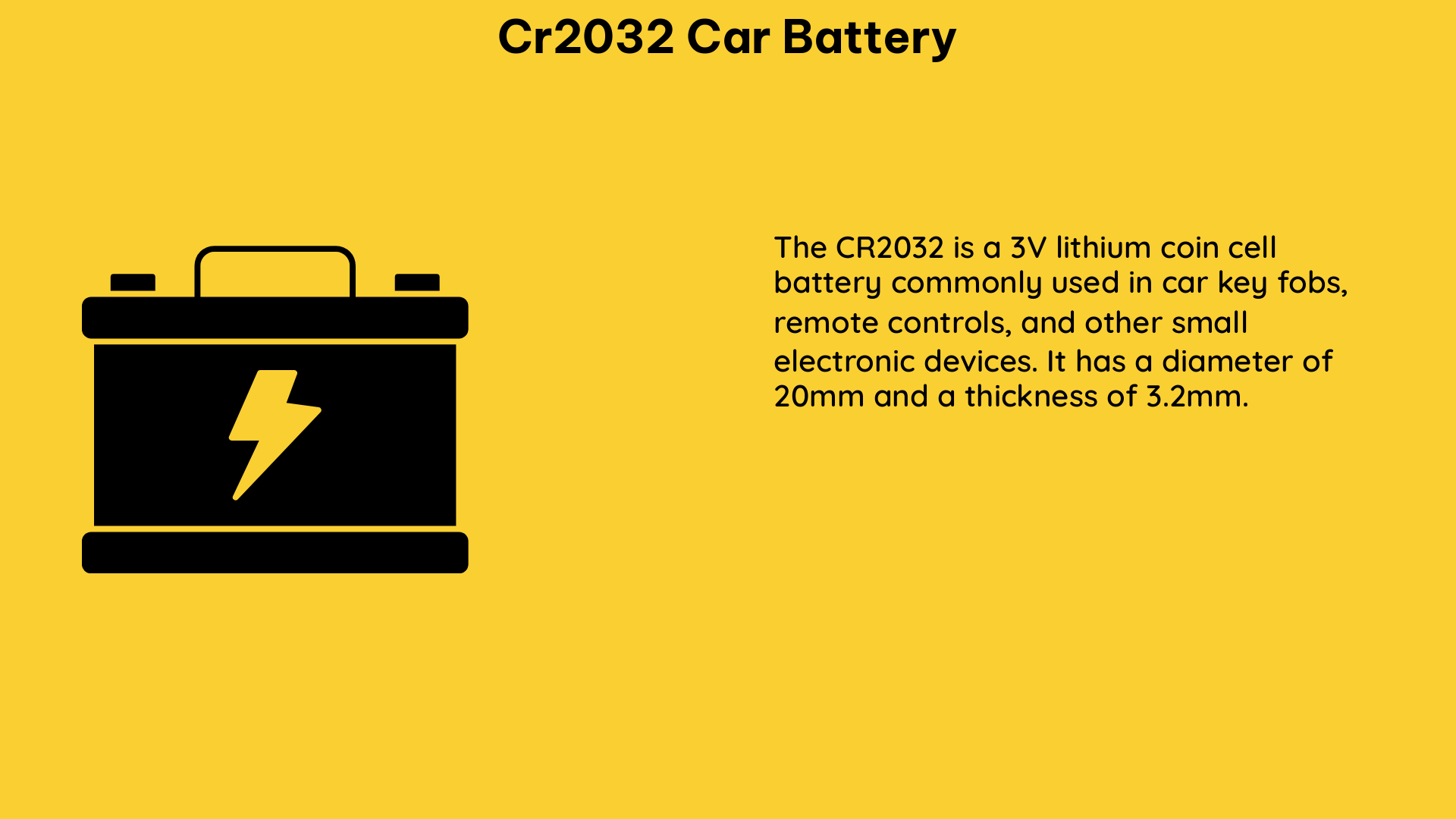The CR2032 car battery is a lithium/manganese dioxide (Li/MnO2) battery with a nominal voltage of 3.0 volts and a typical capacity of 235 mAh. These batteries are commonly used in low-drain devices due to their high energy density and long shelf life, making them an essential component in various automotive and electronic applications.
Understanding the Capacity and Discharge Characteristics of CR2032 Batteries
When it comes to measuring the capacity of a CR2032 battery, it’s crucial to consider the discharge rate and load conditions. A typical pulse drain for these batteries is 6.8 mA for 2 seconds, 12 times a day. However, when subjected to a continuous drain of 0.19 mA, the battery can last up to 1245 hours, showcasing its impressive longevity.
The capacity of a CR2032 battery can also vary depending on the discharge rate and temperature. At a discharge rate of 0.2 mA and a temperature of 21°C, the battery can deliver up to 235 mAh. In contrast, at a discharge rate of 6.8 mA and a temperature of 25°C, the battery can only deliver up to 100 mAh.
To ensure accurate and relevant capacity measurements, it’s recommended to use a load that closely matches the intended application when testing a CR2032 battery. This approach helps to mimic real-world usage scenarios and provides a more accurate representation of the battery’s performance.
Factors Influencing the Lifespan of CR2032 Batteries

The lifespan of a CR2032 battery is influenced by several factors, including the discharge rate, temperature, and storage conditions. Understanding these factors can help users optimize the battery’s performance and extend its usable life.
Discharge Rate
The discharge rate has a significant impact on the battery’s lifespan. As mentioned earlier, a continuous drain of 0.19 mA can result in a battery life of up to 1245 hours, while a pulse drain of 6.8 mA for 2 seconds, 12 times a day, is more typical for these batteries.
Temperature
Temperature also plays a crucial role in the battery’s capacity and lifespan. At a discharge rate of 0.2 mA and a temperature of 21°C, the battery can deliver up to 235 mAh. However, at a discharge rate of 6.8 mA and a temperature of 25°C, the battery’s capacity is reduced to only 100 mAh.
Storage Conditions
Proper storage conditions can also contribute to the longevity of CR2032 batteries. It’s recommended to store these batteries in a cool, dry place, away from direct sunlight and heat sources. Exposure to high temperatures or humidity can accelerate the battery’s self-discharge and reduce its overall lifespan.
Measuring the Capacity of CR2032 Batteries
When testing the capacity of a CR2032 battery, it’s essential to use a load that closely matches the intended application. This approach ensures that the capacity measurements are accurate and relevant to the battery’s real-world usage.
One common method for measuring the capacity of a CR2032 battery is the constant current discharge test. In this test, the battery is discharged at a constant current until it reaches a specified cut-off voltage, typically 2.0 volts. The total capacity is then calculated by multiplying the discharge current and the time it takes to reach the cut-off voltage.
Another method is the pulse discharge test, which simulates the intermittent usage patterns of many electronic devices. In this test, the battery is subjected to a series of short, high-current pulses, followed by periods of rest. The total capacity is then calculated based on the number of pulses the battery can sustain before reaching the cut-off voltage.
Selecting the Right CR2032 Battery for Your Application
When choosing a CR2032 battery for your application, it’s important to consider factors such as the required capacity, discharge rate, and operating temperature range. Selecting the appropriate battery can help ensure optimal performance and extended lifespan.
For applications with low-drain requirements, a CR2032 battery with a typical capacity of 235 mAh may be suitable. However, for applications with higher discharge rates or operating in extreme temperatures, it may be necessary to select a battery with a higher capacity or a different chemistry, such as a lithium-ion or lithium-polymer battery.
Conclusion
The CR2032 car battery is a versatile and high-energy-density power source that finds widespread use in various automotive and electronic applications. By understanding the factors that influence its capacity, discharge characteristics, and lifespan, users can optimize the performance and longevity of these batteries, ensuring reliable and efficient operation in their devices.
References:
- CR2032 Batteries Market Share Research Report [2023-2030]. (2023-12-22). Retrieved from https://www.linkedin.com/pulse/cr2032-batteries-market-share-research-report-vlnif
- Testing Chinese CR2032 Li-ion Battery Capacity. (2016-02-28). Retrieved from https://electronics.stackexchange.com/questions/219847/testing-chinese-cr2032-li-ion-battery-capacity
- cr2032.pdf – Energizer. (n.d.). Retrieved from https://data.energizer.com/pdfs/cr2032.pdf
- Potential and Limitations of Research Battery Cell Types for … (2023-03-20). Retrieved from https://chemistry-europe.onlinelibrary.wiley.com/doi/10.1002/batt.202300080
- How to Measure a CR2032 Coin cell battery (#006) – YouTube. (2014-11-15). Retrieved from https://www.youtube.com/watch?v=RMQI5R79lx4

The lambdageeks.com Core SME Team is a group of experienced subject matter experts from diverse scientific and technical fields including Physics, Chemistry, Technology,Electronics & Electrical Engineering, Automotive, Mechanical Engineering. Our team collaborates to create high-quality, well-researched articles on a wide range of science and technology topics for the lambdageeks.com website.
All Our Senior SME are having more than 7 Years of experience in the respective fields . They are either Working Industry Professionals or assocaited With different Universities. Refer Our Authors Page to get to know About our Core SMEs.